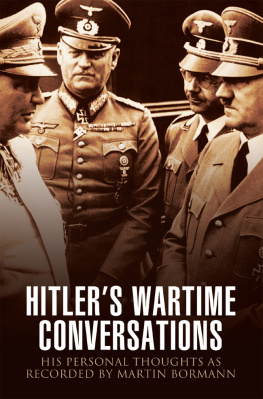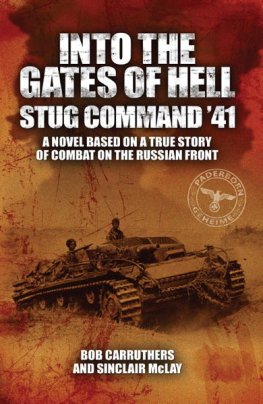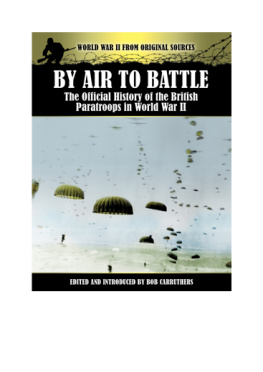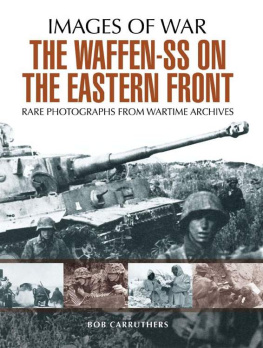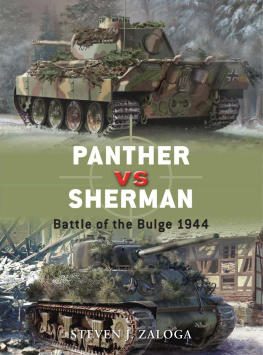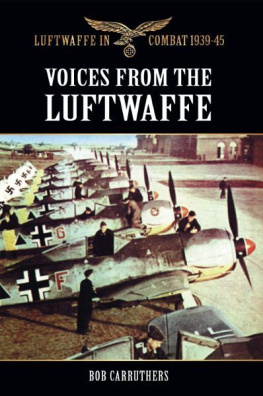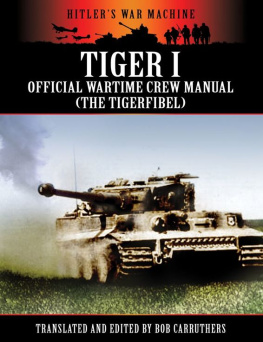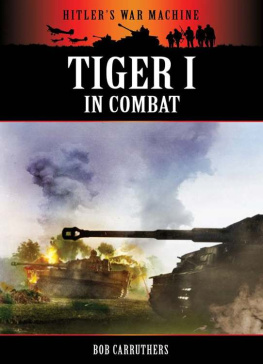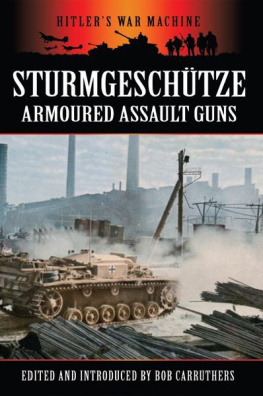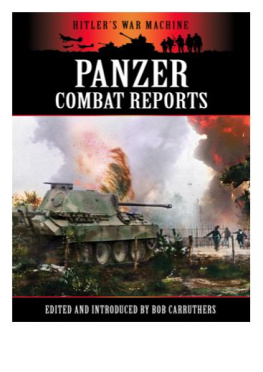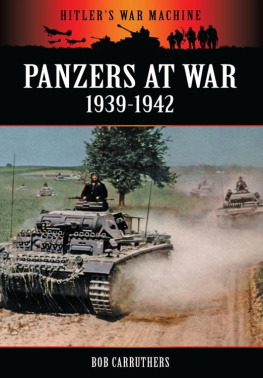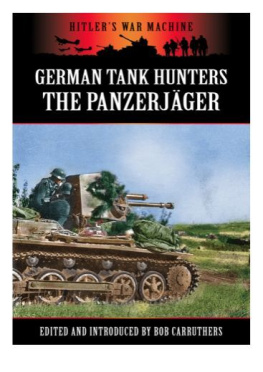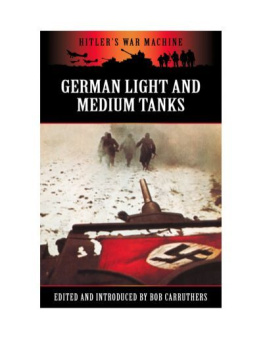This edition published in 2013 by
Pen & Sword Military
An imprint of
Pen & Sword Books Ltd
47 Church Street
Barnsley
South Yorkshire
S70 2AS
First published in Great Britain in 2012 in digital format by
Coda Books Ltd.
Copyright Coda Books Ltd, 2012
Published under licence by Pen & Sword Books Ltd.
ISBN: 978 1 78159 211 3
EPUB ISBN: 978 1 47384 442 1
PRC ISBN: 978 1 47384 449 0
The right of Bob Carruthers to be identified as Author of this work has been asserted
by him in accordance with the Copyright, Designs and Patents Act 1988.
A CIP catalogue record for this book is
available from the British Library
All rights reserved. No part of this book may be reproduced or transmitted in any form
or by any means, electronic or mechanical including photocopying, recording or by
any information storage and retrieval system, without permission from the Publisher in
writing.
Printed and bound in India
By Replika Press Pvt. Ltd.
Pen & Sword Books Ltd incorporates the Imprints of Pen & Sword Aviation, Pen &
Sword Family History, Pen & Sword Maritime, Pen & Sword Military, Pen & Sword
Discovery, Pen & Sword Politics, Pen & Sword Atlas, Pen & Sword Archaeology,
Wharncliffe Local History, Wharncliffe True Crime, Wharncliffe Transport, Pen &
Sword Select, Pen & Sword Military Classics, Leo Cooper, The Praetorian Press,
Claymore Press, Remember When, Seaforth Publishing and Frontline Publishing
For a complete list of Pen & Sword titles please contact
PEN & SWORD BOOKS LIMITED
47 Church Street, Barnsley, South Yorkshire, S70 2AS, England
E-mail:
Website: www.pen-and-sword.co.uk
- C H A P T E R 1 -
GUDERIANS PROBLEM CHILD
F ROM LATE 1942 onwards the German engineers employed in the hard pressed armaments industry produced a remarkable range of armoured fighting vehicles. They were driven by the desperate demands of an insatiable front line which was showing the first warning signs that it might ultimately roll back and consume their homeland in a red tide. The race against time was remorseless, and this ominous situation was compounded by Adolf Hitler who harboured unrealistic expectations that new and improved tank designs were somehow capable of turning back the surge of the Red Army. The weight of Hitlers expectancy and his unreasonable deadlines placed the engineers and manufacturers under extreme pressure to design, develop and supply new and unproven battlefield technology as quickly as possible. The war in the East was a demanding and remorseless taskmaster which consumed every new offering as soon as it was ready for action, the price of failure was unthinkable and, not surprisingly, this unsettling combination of concerns actually drove the German armaments industry on to some remarkable achievements. Chief among these was the development and deployment of the Panzer Mark V - The Panther.
The Panzer Mark V - The Panther.
Among the many excesses which the Nazi regime condoned was its willingness to embrace the concept of slave labour. The German armaments industry workforce, both willing and enslaved, worked ceaselessly in gloomy war ravaged factories to design, develop and produce an astonishing variety of highly effective armoured fighting vehicles which appeared on the battlefield in an incredibly short period of time. It has often been said that the German armaments industry placed the best possible weapons in the worst possible hands; that is certainly true of the Panther.
Under peacetime conditions a new fighting vehicle would generally be designed, built and tested over a period of three to five years. Between 1941 and 1945 however some very successful designs for armoured fighting vehicles were produced in just 12 months. As war progressed the Red Army received huge volumes of increasingly sophisticated vehicles and weapons and as a result it became imperative that new German vehicles should be brought into action as quickly as possible. Many of the most successful German machines were adaptations of existing vehicles which were modified to produce specialist tank destroyers such as the Jagdpanzer IV and the Nashorn. Other armoured fighting vehicles such as the Tiger and the Panther, were completely designed and built from scratch, these designs were more innovative and, in most respects, more effective, but the hasty development process meant that significant teething problems often remained unsolved. In the case of the Panther the evidence of this hurriedness was evident for all to see. On his way up to the front lines prior to the battle of Kursk SS Panzer Grenadier Hofstetter recalled seeing the new Panther for the first time.
Heinz Wilhelm Guderian was a German general during World War II. He was a pioneer in the development of armored warfare, and was the leading proponent of tanks and mechanization in the Wehrmacht. Germanys panzer forces were raised and organized under his direction as Chief of Mobile Forces. During the war, he was a highly successful commander of panzer forces in several campaigns, became Inspector-General of Armored Troops, rose to the rank of Generaloberst, and was Chief of the General Staff of the Heer in the last year of the war.
As we passed the unfamiliar column of Panzers, it was soon obvious that there had been a serious problem with one machine in particular that was reduced to a burnt out wreck with no sign of any enemy activity. We later learnt that this was the Panther Guderians problem child!
The omens pointed towards dismal failure, but against heavy odds, the Panther gradually gained a fearsome reputation and eventually produced a legacy which shaped the face of tank design in the post war era. The Panthers excellent combination of firepower and mobility produced a fighting machine which has frequently been hailed as one of the best tank designs of World War II. It has been estimated that every Panther deployed accounted for, on average, five allied tanks and as many as nine Russian tanks.
The statistics are unproven and in reality it may well be the case that the Panther was actually a very expensive failure which drew much needed resources away from the real requirements of the Panzertruppen. At the time it was strongly argued, by Guderian and others, that what the hard pressed front line troops really needed was to a high volume of reliable main battle tanks in the shape of the Mark IV F2, a machine which could at least attain parity with the T-34. There remains the strong argument that the decision to develop the Panther was a wrong option, especially as the problems caused by the poor quality components used in the final drive were never overcome. This serious flaw made the Panther highly susceptible to breakdowns which were so frequent as to be almost a certainty. These catastrophic mechanical failures were particularly common during the long road marches which became increasingly numerous as the war progressed and the Panthers had to be rushed from place to place. Many of the repairs required, particularly those on the final drive, were very difficult and frequently could not be managed at divisional workshops and required the vehicle being returned to army depots far behind the lines. On the retreat it was not always possible to recover the broken down vehicles and this led to many, otherwise salvageable, Panthers having to be destroyed.


